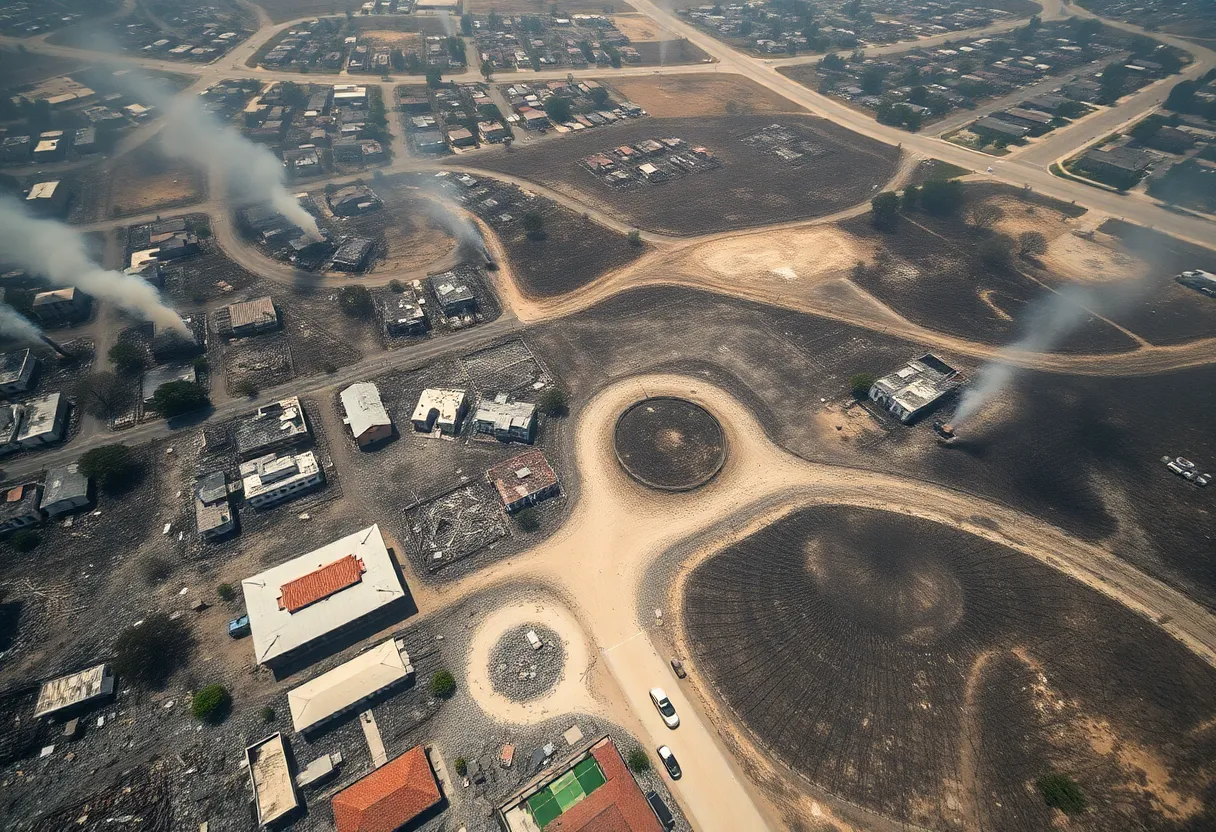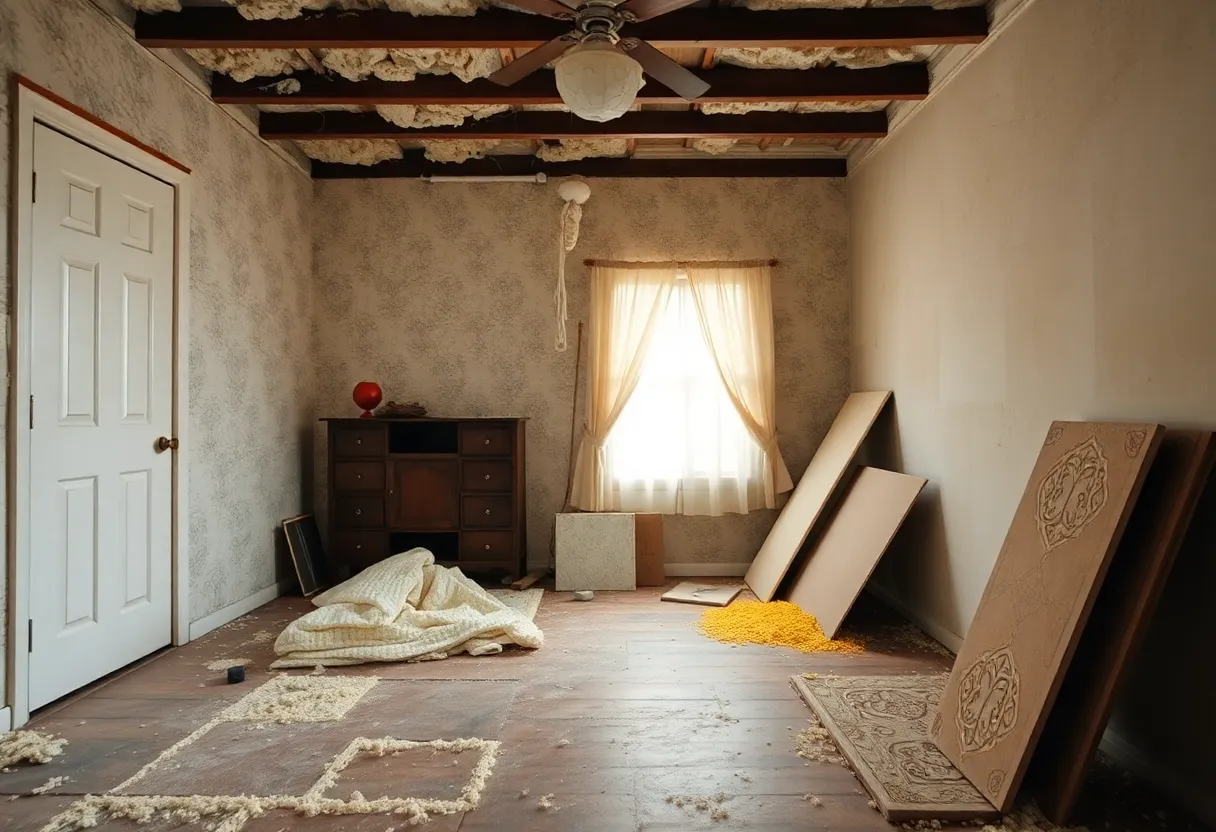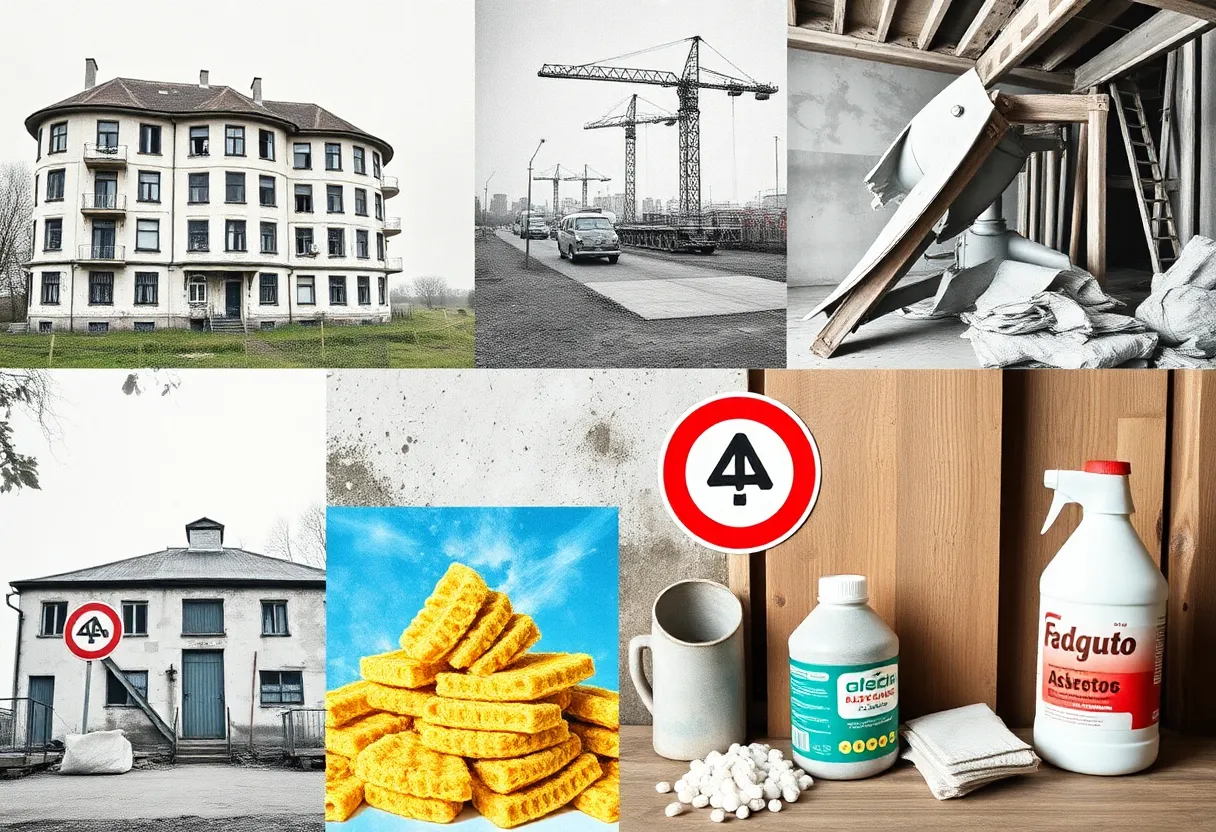News Summary
Wildfires in Los Angeles pose a serious health risk as asbestos contamination complicates cleanup efforts, affecting thousands of properties.
Los Angeles Wildfires: A Hidden Danger of Asbestos Contamination Looms Over Cleanup Efforts
The devastating wildfires that swept through the Los Angeles area have left behind not just charred landscapes and the tragic loss of life, but also a grave health risk lurking in the ashes—asbestos contamination. With over 16,000 structures destroyed and thousands of acres set ablaze, authorities are grappling with the heavy task of cleanup, while simultaneously trying to safeguard public health from the hazardous material often found in older buildings.
Understanding the Asbestos Risk
Asbestos, a notorious carcinogen recognized for its ability to cause severe health issues such as asbestosis, lung damage, and various cancers including mesothelioma, was commonly used in construction pre-1980s. A worrying statistic coming out of the Eaton Fire indicates that up to 50% of properties tested positive for asbestos, a haunting reality that echoes through regions devastated by the flames. The Palisades Fire displayed similar concerns, with around 33% of properties affected showing asbestos presence.
Regulations and Compliance Amid Chaos
In light of this significant public health concern, local owners and operators of wildfire-damaged facilities are mandated to comply with the South Coast Air Quality Management District (SCAQMD) Rule 1403. This regulation is crucial as it focuses on preventing the release of airborne asbestos fibers during cleanup operations. Under Rule 1403, all cleanup activities—including debris removal—are categorized as “renovation” or “demolition,” and specific protocols must be followed.
For any demolition or renovation work to commence, a Cal/OSHA certified inspector is required to conduct a thorough survey of the facility for asbestos-containing materials (ACMs). If ACMs are identified, they must undergo sampling and analysis, though property owners have the option to treat them as ACMs without analysis. Only if ACMs are found should the owner notify the regional Air District prior to starting work—a notification that must occur at least ten working days ahead, though emergency conditions could allow for shorter notice.
Civil Penalties for Noncompliance
The stakes are high for those ignoring these safety measures, as violations of Rule 1403 could result in substantial penalties, starting at $5,000 per day. Severe, willful violations could climb as high as $1 million. Though Governor Newsom has waived some regulatory requirements in response to the devastating wildfires, ensuring the compliance of Rule 1403 remains a priority due to its focus on protecting public health.
The Health Implications
Residents living within 250 yards of fire-affected sites are at heightened risk for asbestos exposure, prompting advisories from the Los Angeles County Department of Public Health. The fires not only pose immediate dangers but also carry long-term health risks associated with asbestos exposure, particularly for those undertaking cleanup efforts. The existing conditions of legacy asbestos found in an estimated 73% of Southern California structures make diligent monitoring and regulatory compliance essential.
Environmental Concerns and Future Outlook
The widespread destruction has raised statewide alarms about environmental toxins, leading to calls for federal oversight to monitor harmful pollutants released during these catastrophic events. Recent maps have been developed to assign hazard scores to areas based on various risk factors including fire likelihood and historical fire data, resulting in stricter fire safety standards for homes in high-risk zones.
FEMA and state officials are actively involved in assessing hazardous areas post-wildfires, working to ensure that homes remain safe from further threats. However, experts caution that routine air quality monitoring often fails to account for toxic substances released during wildfires, causing public confusion and concern regarding health risks.
As the ashes cool and the smoke clears, the path to recovery from the wildfires in Los Angeles is fraught with challenges, not merely in rebuilding burned structures but also in navigating the profound public health implications of asbestos contamination. The focus remains on ensuring that cleanup efforts are conducted safely, responsibly, and in compliance with established regulations to protect the health and safety of all.
Deeper Dive: News & Info About This Topic
HERE Resources
Libby Asbestos Clinic in Crisis: Federal Court Hearing Sparks Controversy
The Lingering Danger of Asbestos: A Call for Action
Clinic Closure Leaves Libby Residents in the Lurch
The Looming Danger: Asbestos Regulations in Jeopardy
Potential Asbestos Ban Under Review as Health Risks Persist
EPA Seeks Pause in Asbestos Regulation Litigation Amid Industry Concerns
School District of Philadelphia Faces Federal Charges Over Asbestos Violations
Mounting Concerns Over Asbestos Use in America
Groundbreaking Criminal Charges Against Philadelphia School District Over Asbestos Mismanagement
EPA’s Daring Move: Reconsideration of Chrysotile Asbestos Ban Raises Alarms
Additional Resources
- Asbestos.com: Wildfire Cleanup Asbestos Contamination
- Wikipedia: Asbestos
- Mesothelioma Guide: California Wildfires Asbestos Exposure
- Google Search: Wildfire Asbestos Exposure
- ABC7: Los Angeles Wildfires Hidden Dangers
- Encyclopedia Britannica: Asbestos
- CBS News: Altadena Homes Test Positive for Asbestos
- Google News: Environmental Concerns Asbestos Wildfires



















